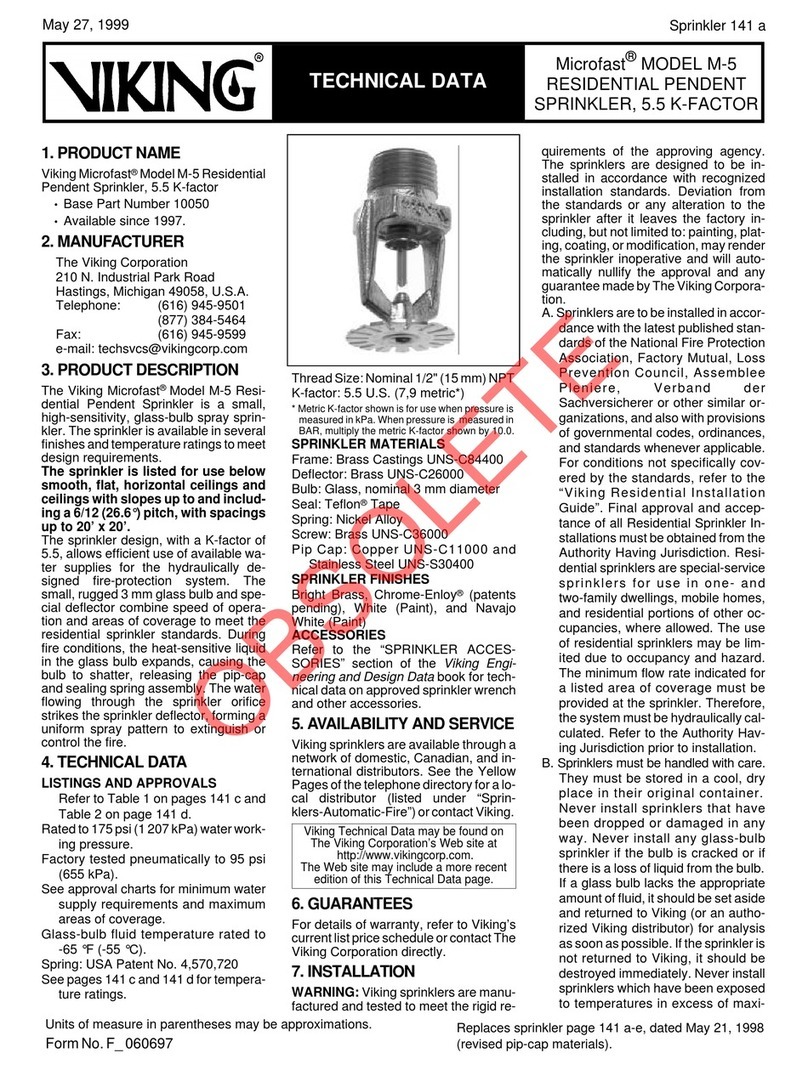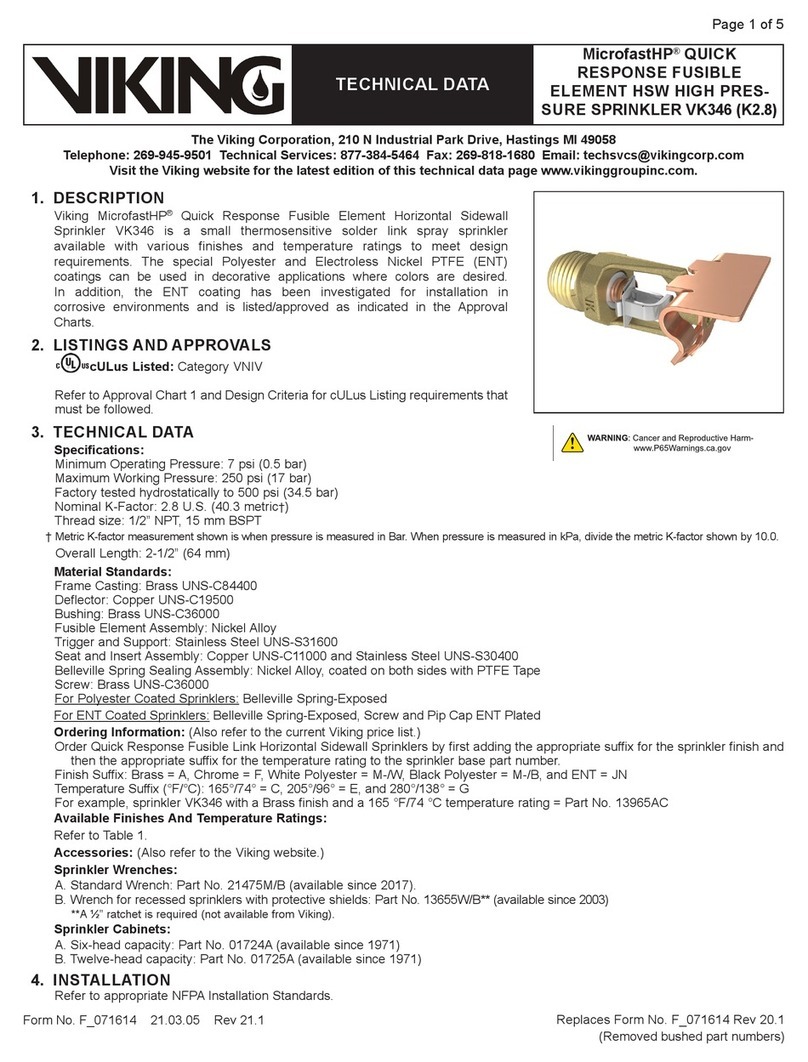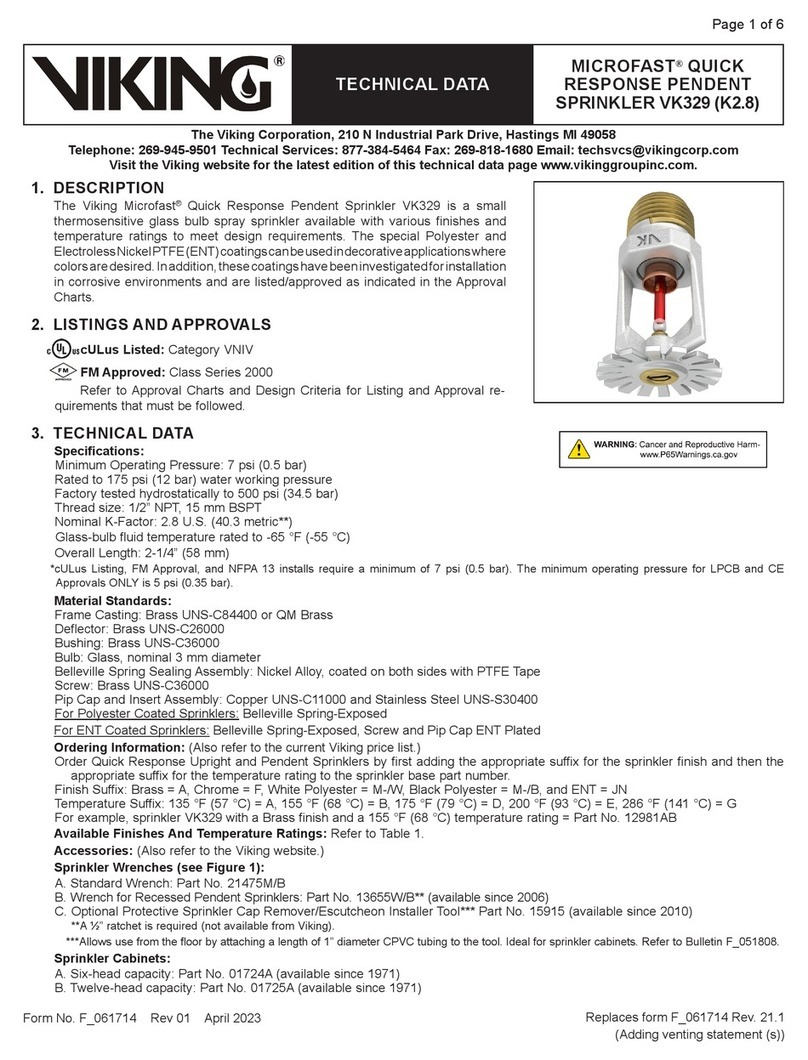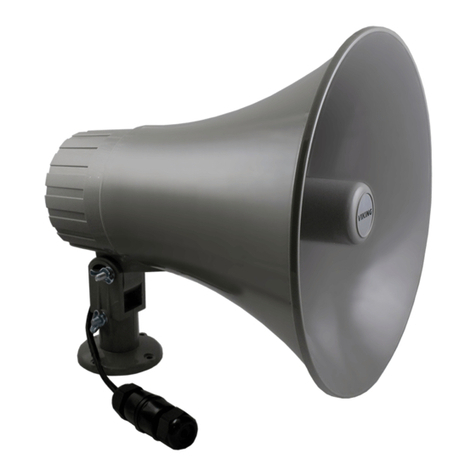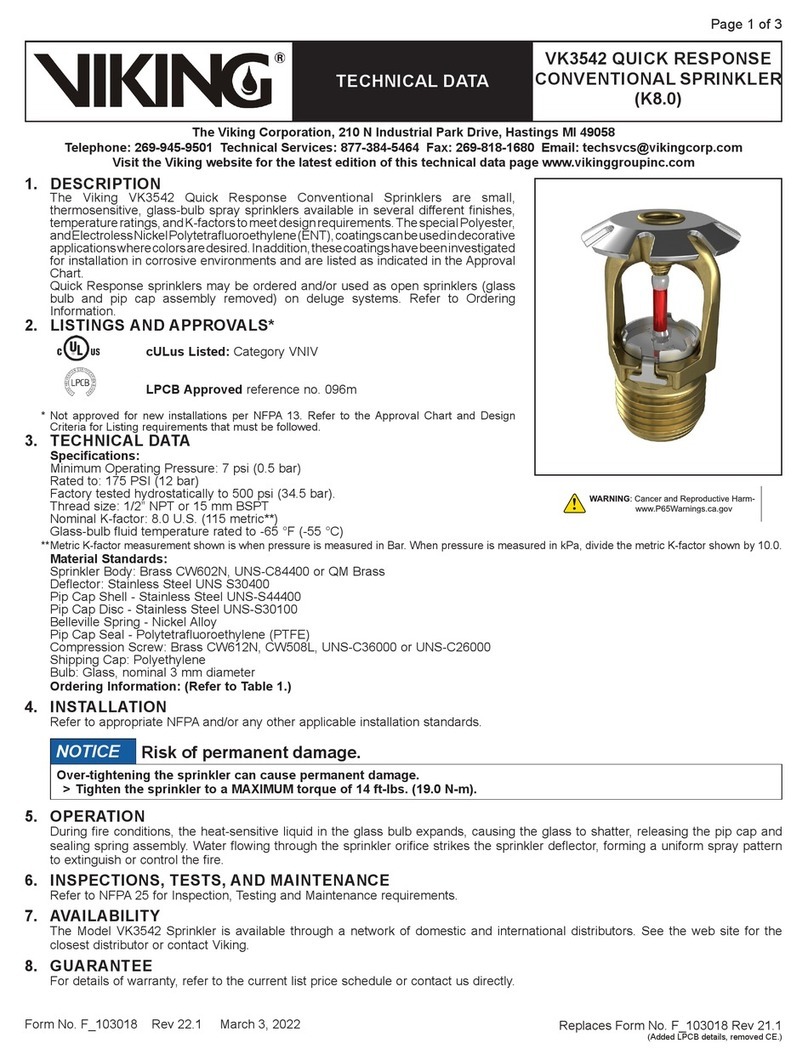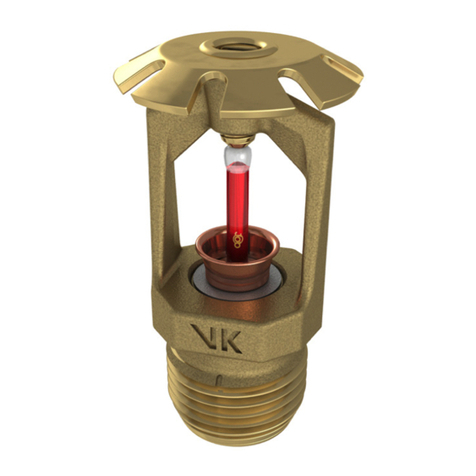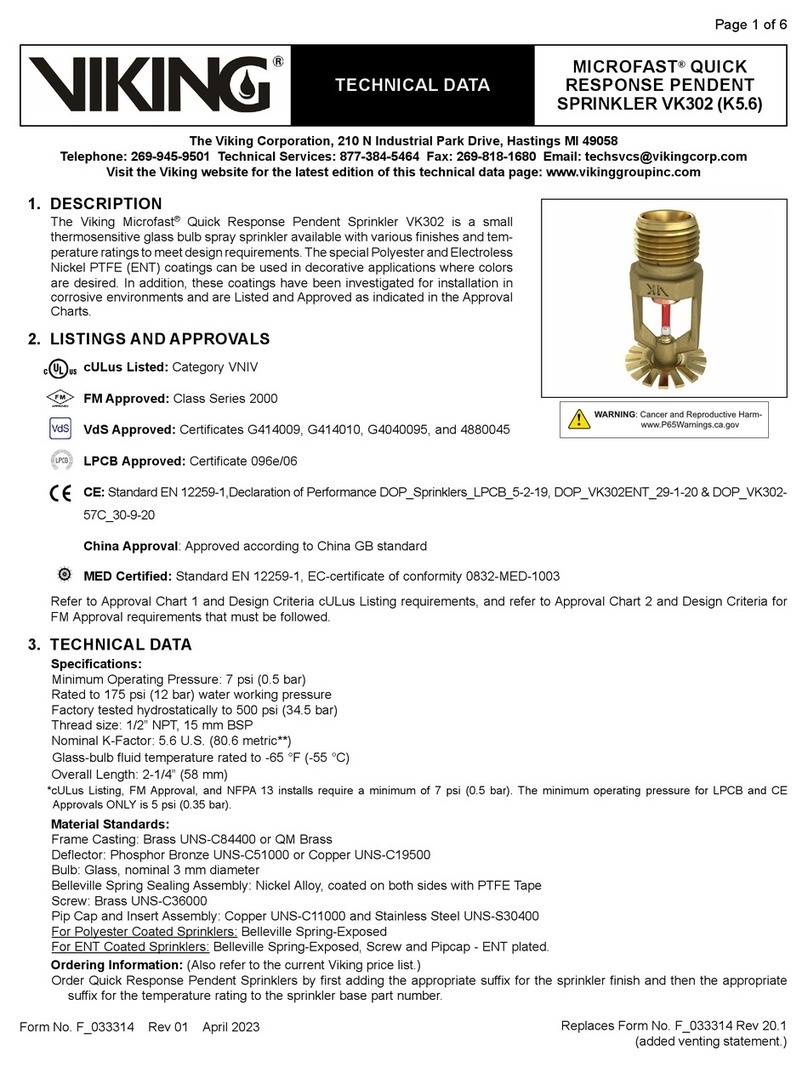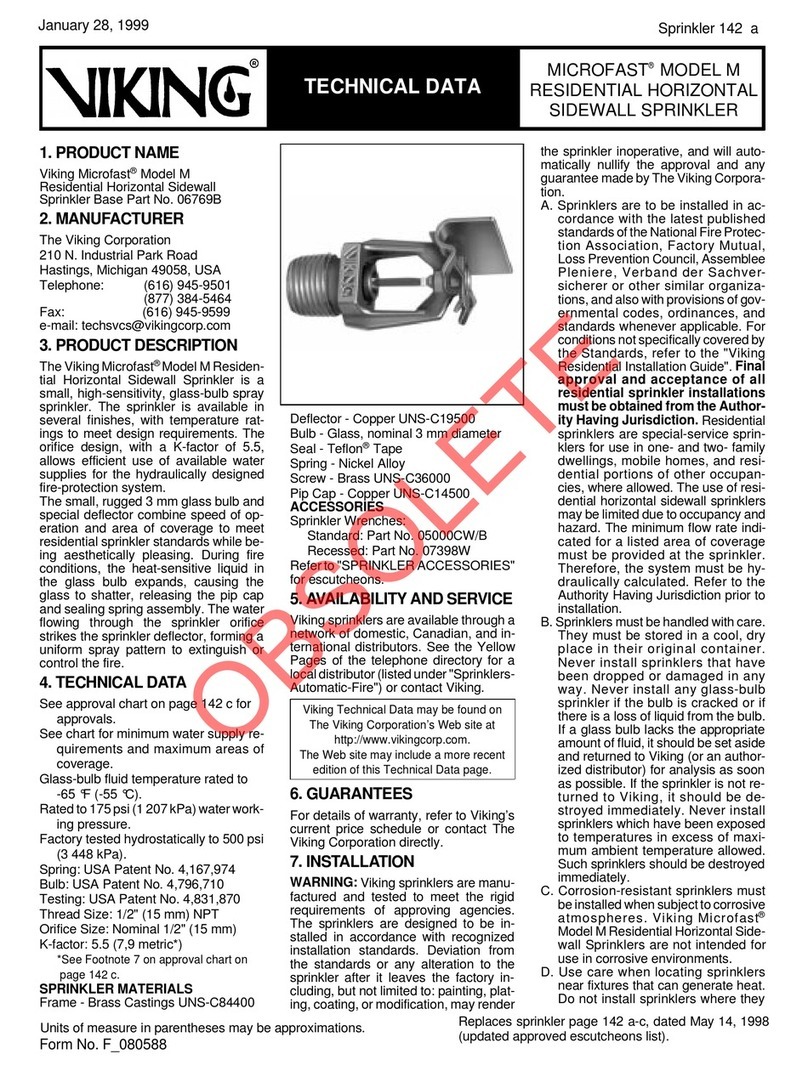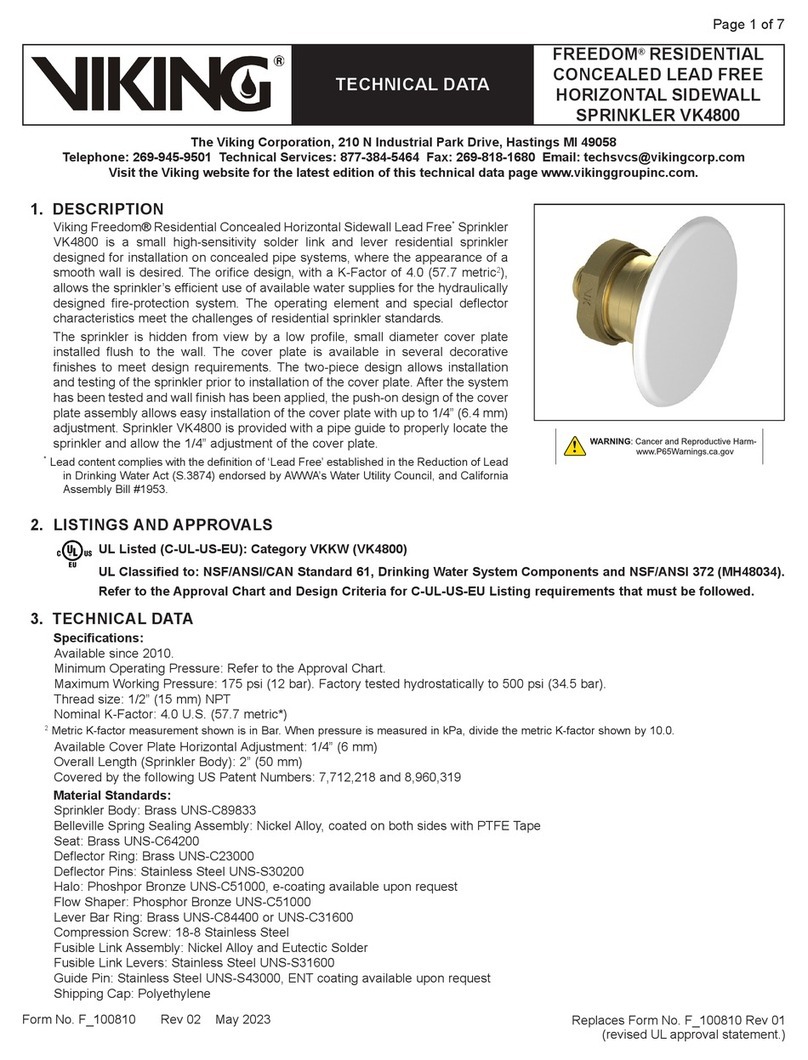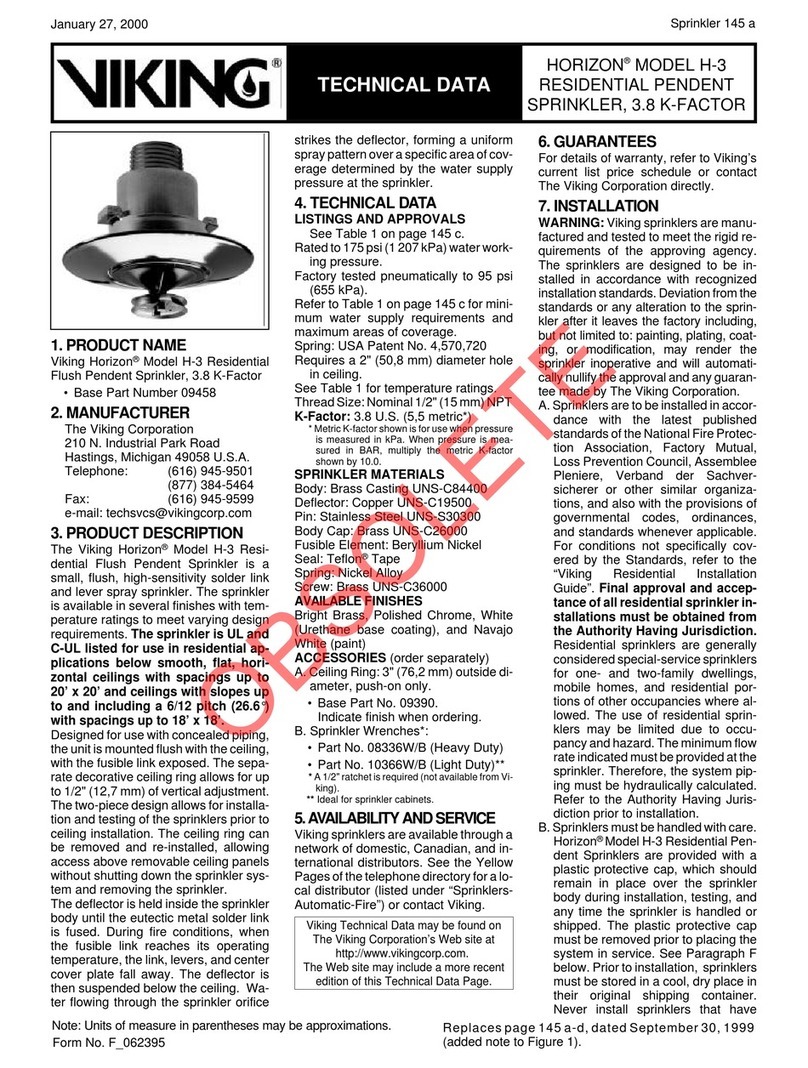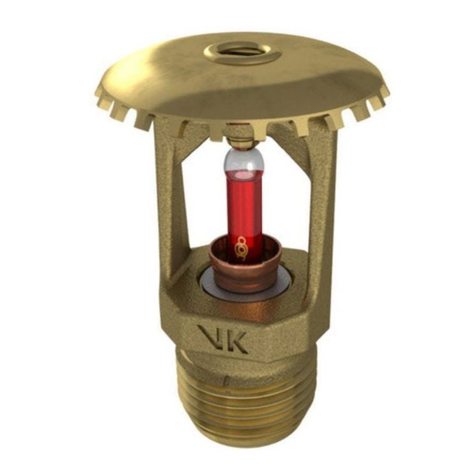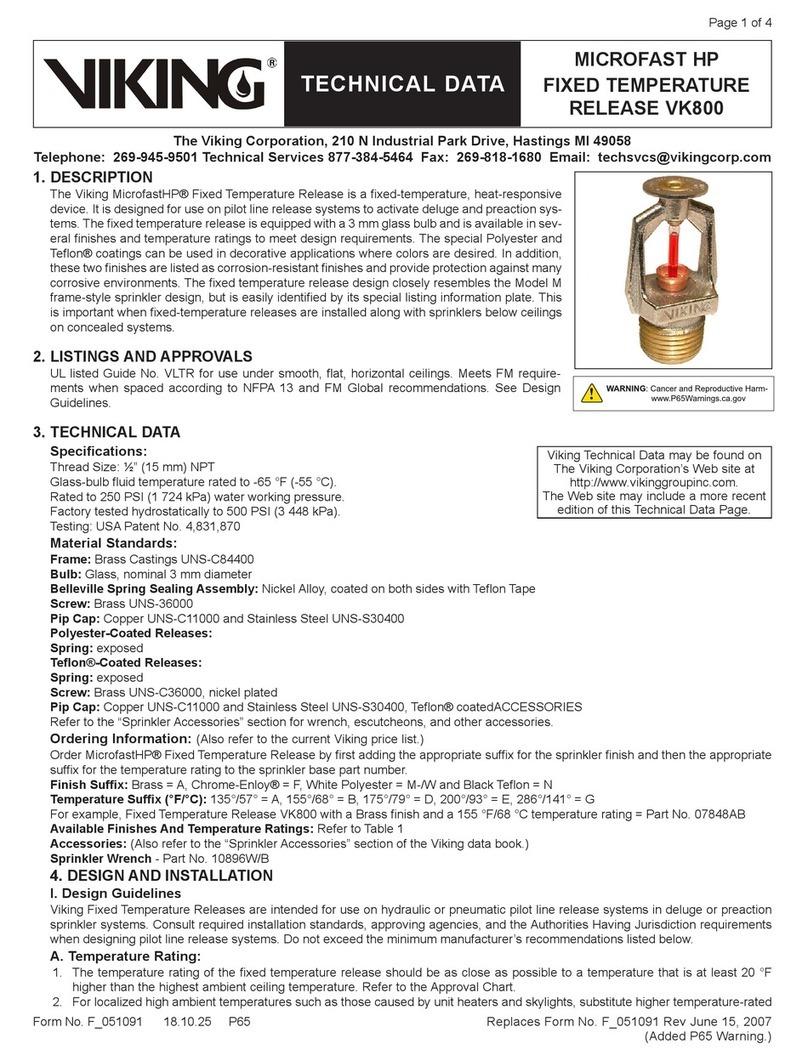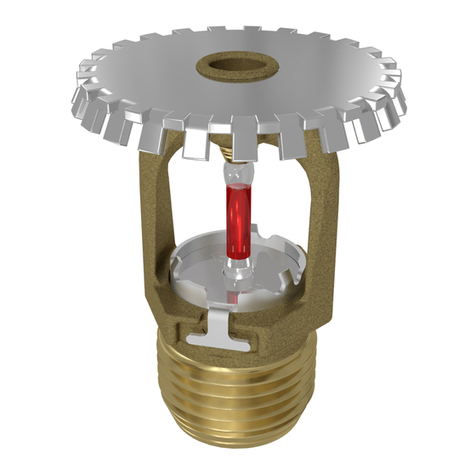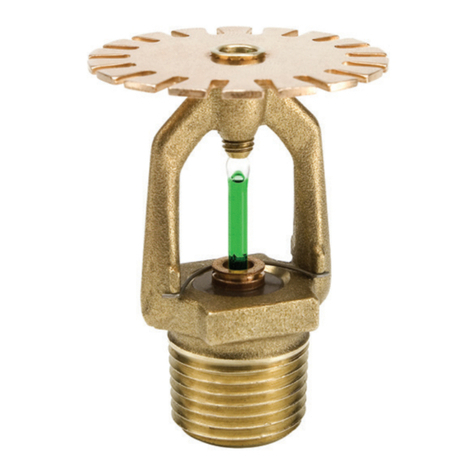
ESFR PENDENT SPRINKLER
VK503 (K16.8)
TECHNICAL DATA
March 14, 2008
The Viking Corporation, 210 N Industrial Park Road, Hastings MI 49058
T
elephone:
269-945-9501
T
echnical
Services
877-384-5464
Fax:
269-945-4495
Email:
[email protected]DO NOT exceed 50 ft. lbs. of torque (hand tight, plus approximately two full turns with the wrench) to install these sprinklers.
Higher levels of torque may distort the sprinkler inlet with consequent leakage or impairment of the sprinkler.
E. After installation, the entire sprinkler system must be tested. The test must be conducted to comply with the Installation Standards.
Make sure the sprinkler has been properly tightened. If a thread leak occurs, normally the unit must be removed, new pipe-joint
compound or tape applied, and then reinstalled. This is due to the fact that when the joint seal is damaged, the sealing compound
or tape is washed out of the joint. Immediately replace any damaged units, using the special sprinkler wrench only.
F. After installation and testing and repairing of all leaks, remove the protective caps from the sprinklers. Do NOT use any
type of tool to remove the cap. Remove the cap by hand: turn it slightly and pull it off the sprinkler. When removing caps,
use care to prevent dislodging or damaging sprinkler ejector spring and fusible element. THE CAPS MUST BE REMOVED
FROM SPRINKLERS BEFORE PLACING THE SYSTEM IN SERVICE!
G. System design must be based on ESFR design guidelines described in applicable FM Global Loss Prevention Data Sheets, the
latest standards of Verband der Sachversicherer, LPCB, the National Fire Protection Association, and the Authorities Having
Jurisdiction. All requirements of recognized sprinkler system design standards apply to systems utilizing Viking ESFR Pendent
Sprinklers.
5. OPERATION
During fire conditions, the heat-sensitive fusible element assembly disengages, releasing the seat and spring assemblies to open
the waterway. Water flowing through the sprinkler orifice strikes the sprinkler deflector, forming a uniform spray pattern to suppress
the fire.
6. INSPECTIONS, TESTS AND MAINTENANCE
NOTICE: The owner is responsible for maintaining the fire protection system and devices in proper operating condition. For
minimum maintenance and inspection requirements, refer to the NFPA standard that describes care and maintenance of sprinkler
systems. In addition, the Authorities Having Jurisdiction may have additional maintenance, testing, and inspection requirements
that must be followed.
A. The sprinklers must be inspected on a regular basis for corrosion, mechanical damage, obstructions, paint, etc. The frequency of
inspections may vary due to corrosive atmosphere, water supplies, and activity around the device.
B. Sprinklers that have been painted or mechanically damaged must be replaced immediately. Sprinklers showing signs of corrosion
shall be tested and/or replaced immediately as required. Installation standards require sprinklers to be tested and, if necessary, re-
placed after a specified term of service. For Viking ESFR Pendent Sprinklers, refer to the Installation Standards (e.g., NFPA 25) and
the Authorities Having Jurisdiction for the specified period of time after which testing and/or replacement is required. Sprinklers that
have operated cannot be reassembled or reused, but must be replaced. When replacing sprinklers, use only new sprinklers.
C. The sprinkler discharge pattern is critical for proper fire protection. Therefore, nothing should be hung from, attached to, or
otherwise obstruct the discharge pattern. All obstructions must be immediately removed or, if necessary, additional sprinklers
installed.
D. When replacing existing sprinklers, the system must be removed from service. Refer to the appropriate system description and/or
valve instructions. Prior to removing the system from service, notify all Authorities Having Jurisdiction. Consideration should be
given to employment of a fire patrol in the affected area.
1. Remove the system from service, drain all water, and relieve all pressure on the piping.
2. Using the special sprinkler wrench, remove the old sprinkler and install the new unit. Care must be taken to ensure that the
replacement sprinkler is the proper model and style, with the correct orifice size, temperature rating, and response character-
istics. A fully stocked spare sprinkler cabinet should be provided for this purpose.
3. Place the system back in service and secure all valves. Check the replaced sprinklers and repair all leaks.
E. Sprinkler systems that have been subject to a fire must be returned to service as soon as possible. The entire system must
be inspected for damage and repaired or replaced as necessary. Sprinklers that have been exposed to corrosive products of
combustion, but have not operated, should be replaced. Refer to the Authorities Having Jurisdiction for minimum replacement
requirements.
Sprinkler 123e

